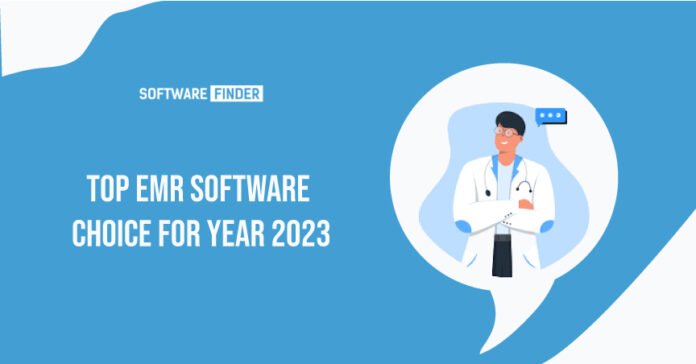Introduction
BlueEHR is a cloud-based electronic health record (EHR) software system that is designed to provide healthcare organizations and providers with a complete solution for managing patient information and workflows. The software is created by ZH Healthcare, a US-based healthcare IT company, and it is designed to be flexible, scalable, and easy-to-use. In this report, we will provide a complete guide to BlueEHR software, covering its features, benefits, and how it can help healthcare organizations to streamline their operations.
Features:
BlueEHR offers a comprehensive range of features that are designed to meet the needs of healthcare providers and organizations of all sizes. Some of the key features of the software include:
- Patient Management: BlueEHR allows healthcare providers to manage patient information, including medical history, demographics, and insurance information, all in one place. The software also allows providers to create and manage patient records, including clinical notes, medications, allergies, and more.
- Clinical Decision Support: The software includes a range of clinical decision support tools that help healthcare providers make informed decisions about patient care. These tools include reminders, alerts, and notifications based on patient data, as well as evidence-based guidelines for treatment.
- Reporting and Analytics: BlueEHR provides a range of reporting and analytics tools that allow healthcare organizations to analyze patient data and identify trends and patterns. The software can generate a range of reports, including patient demographics, clinical data, and financial data.
- Customization: BlueEHR is highly customizable, allowing healthcare organizations to tailor the software to their specific needs. The software can be customized to meet the unique workflows and requirements of different departments and specialties, and it can also be integrated with other healthcare IT systems.
Benefits:
The benefits of BlueEHR software are numerous, and they include:
- Improved Patient Care: By providing healthcare providers with access to complete and accurate patient data, BlueEHR can help to improve patient care. The software’s clinical decision support tools can help providers to make informed decisions about treatment, while its patient management features can help to ensure that patients receive the right care at the right time.
- Increased Efficiency: BlueEHR can help healthcare organizations to increase their efficiency by streamlining workflows and reducing administrative tasks. The software’s automated reminders, alerts, and notifications can help providers to stay on top of patient care, while its reporting and analytics tools can help organizations to identify inefficiencies and areas for improvement.
- Cost Savings: By reducing administrative tasks and improving efficiency, BlueEHR can help healthcare organizations to save money. The software can also help to reduce errors and improve patient outcomes, which can result in cost savings in the long run.
- Compliance: BlueEHR is designed to be compliant with a range of regulations and standards, including HIPAA and Meaningful Use. The software includes a range of security features, such as role-based access control, data encryption, and audit trails, to help healthcare organizations to protect patient data and comply with regulations.
How it Works?
BlueEHR is a cloud-based software system, which means that it is hosted on remote servers and accessed over the internet. The software can be accessed using a web browser or mobile app, and it can be used on a range of devices, including desktop computers, laptops, tablets, and smartphones.
To get started with BlueEHR, healthcare organizations will need to sign up for an account and provide some basic information, such as the organization’s name and contact details. Once the account is set up, users can start to create patient records, manage appointments, and access clinical decision support tools.
BlueEHR is designed to be easy-to-use, and it includes a range of training and support resources to help healthcare organizations get the most out of the software. Users can access online
Pros:
- Open-source: BlueEHR is open-source software, meaning it is free to use and can be modified to suit the specific needs of healthcare providers. This can save providers money on licensing fees and provide greater flexibility in customizing the software to their needs.
- Cloud-based: BlueEHR is a cloud-based software, which means that providers can access patient records from anywhere with an internet connection. This can be particularly useful for healthcare providers who work in multiple locations or who need to access records remotely.
- User-friendly: The software has a user-friendly interface that is easy to navigate, making it accessible to healthcare providers with different levels of technological expertise.
- Customizable: BlueEHR is highly customizable, which means that healthcare providers can tailor the software to fit their specific needs. This can include customizing templates, workflows, and reports.
Cons:
- Technical expertise: While BlueEHR is user-friendly, it still requires a certain level of technical expertise to set up and maintain. Healthcare providers may need to invest time and resources into training staff members on how to use the software effectively.
- Limited features: Some healthcare providers may find that BlueEHR lacks certain features they need, such as integration with other software or the ability to customize certain aspects of the software.
- Security: As with any cloud-based software, there are potential security concerns around storing patient data in the cloud. Healthcare providers may need to ensure that appropriate security measures are in place to protect patient data.
- Support: As an open-source software, BlueEHR does not come with dedicated customer support. Healthcare providers may need to rely on community support or hire a third-party vendor for assistance.
Let’s take a look at another popular software:
















